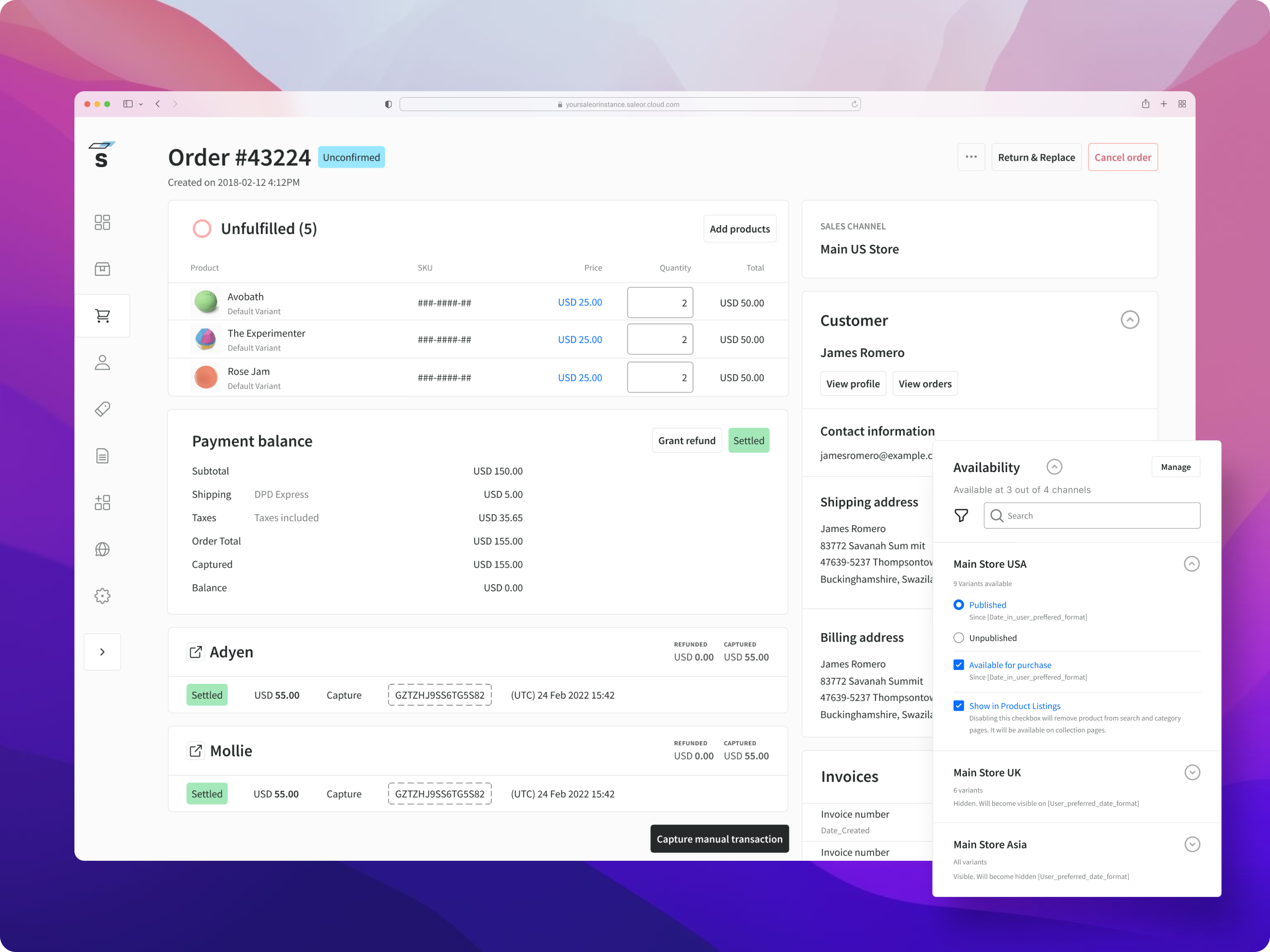A GraphQL-powered, single-page dashboard application for Saleor.
- Node.js v18+
- A running instance of Saleor
- Clone the repository:
git clone https://github.com/saleor/saleor-dashboard.git- Enter the project directory:
cd saleor-dashboard- Install the dependencies:
npm i-
Configure the env vars as described in docs/configuration.md.
-
Start the development server with:
npm run devNote: If you see CORS errors, check CORS configuration of your Saleor instance or CORS settings in the Cloud Console.






